Deadlock¶
约 1622 个字 15 张图片 预计阅读时间 5 分钟
- Deadlock problem
- System model
- Handling deadlocks
- deadlock prevention
- deadlock avoidance
- deadlock detection
- deadlock recovery
The Deadlock Problem¶
Deadlock: a set of blocked processes each holding a resource and waiting to acquire a resource held by another process in the set.
Example

Note: most OSes do not prevent or deal with deadlocks.
Deadlock in program
resource allocation graph 中出现了环,说明有死锁。
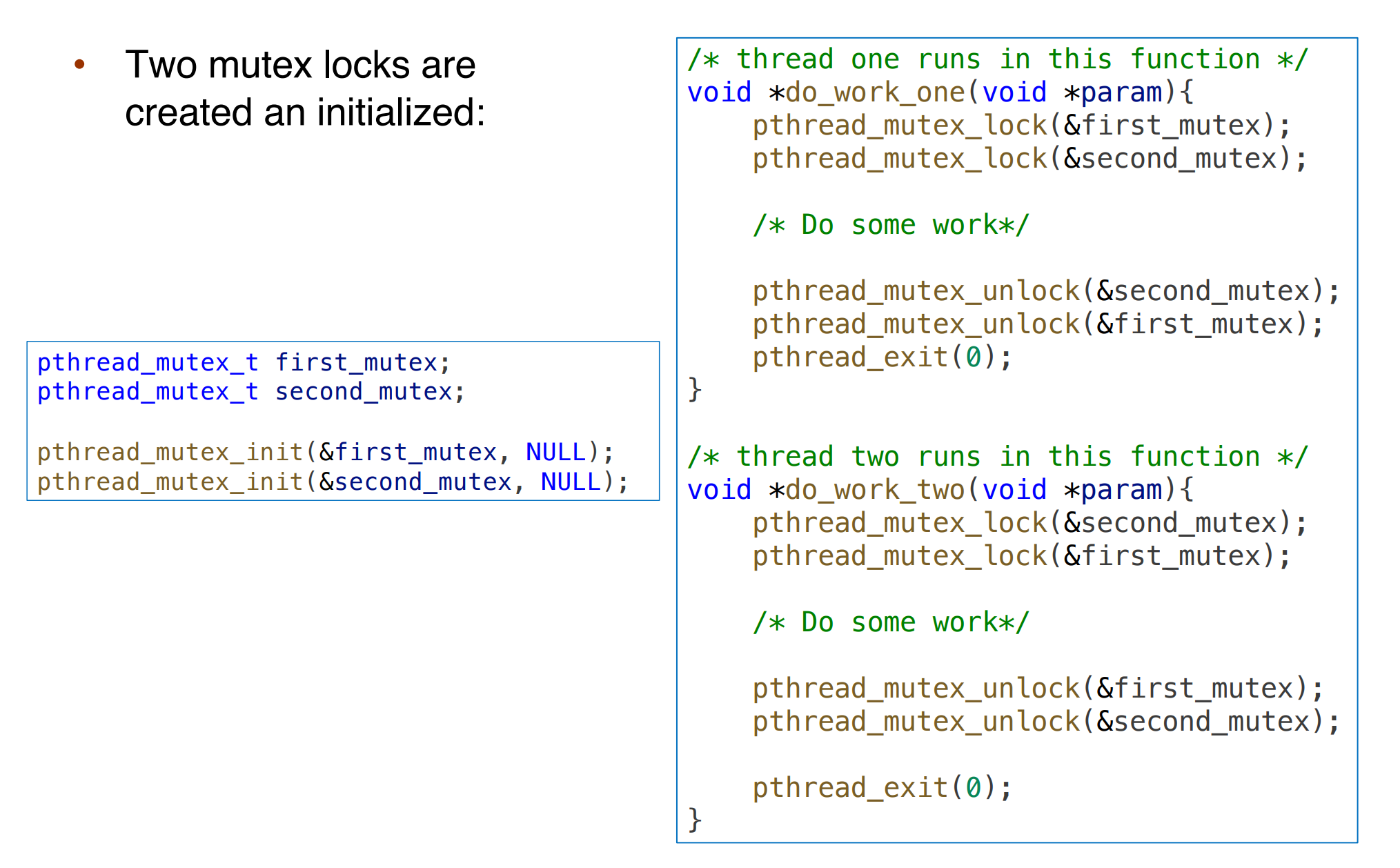
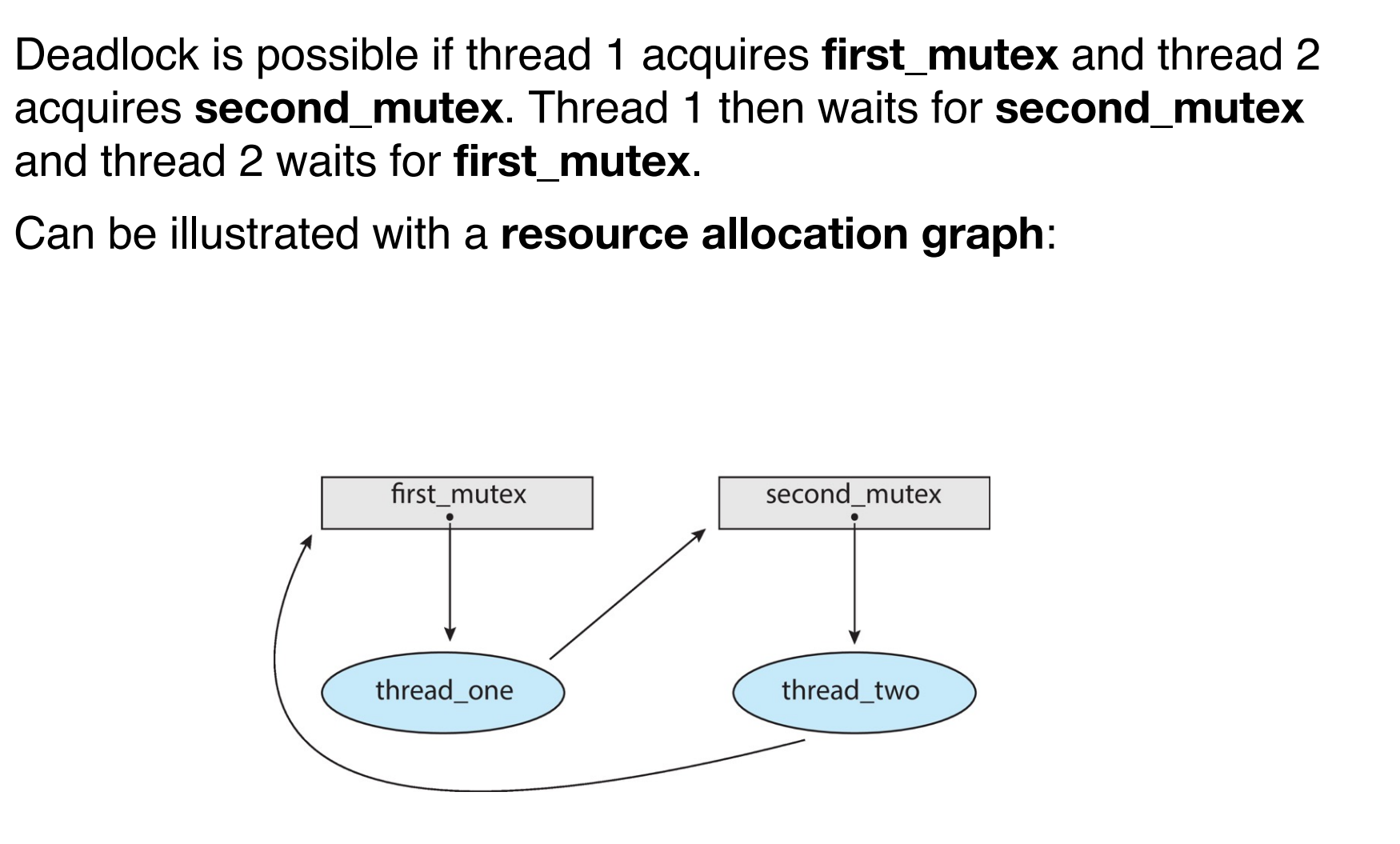
System Model of deadlock¶
- Resources: \(R_1, R_2, \ldots, R_m\)
- each represents a different resource type e.g. CPU cycles, memory space, I/O devices
- each resource type \(R_i\) has Wi instances
- Each process utilizes a resource in the following pattern
- request
- use
- release
Four Conditions of Deadlock¶
-
Mutual exclusion: a resource can only be used by one process at a time.
互斥,资源在一个时间只能被一个进程使用。
-
Hold and wait: a process holding at least one resource is waiting to acquire additional resources held by other processes.
已经有了一些资源,同时想要更多资源。
-
No preemption: a resource can be released only voluntarily by the process holding it, after it has completed its task.
已经获得的资源不能被抢占,只能由自己释放。
-
Circular wait: there exists a set of waiting processes \(\{P_1, P_2, \ldots, P_m\}\)
- \(P_0\) is waiting for a resource that is held by \(P_1\)
- \(P_1\) is waiting for a resource that is held by \(P_2\) ...
- \(P_{n–1}\) is waiting for a resource that is held by \(P_n\)
- \(P_n\) is waiting for a resource that is held by \(P_0\)
Resource-Allocation Graph¶
- Two types of nodes:
- \(P = \{P_1, P_2, \ldots, P_n\}\), the set of all the processes in the system
- \(R = \{R_1, R_2, \ldots,R_m\}\), the set of all resource types in the system
-
Two types of edges:
-
request edge: directed edge \(P_i \rightarrow R_j\)
进程需要这个资源。
-
assignment edge: directed edge \(R_j \rightarrow P_i\)
资源已经分配给这个进程。
-
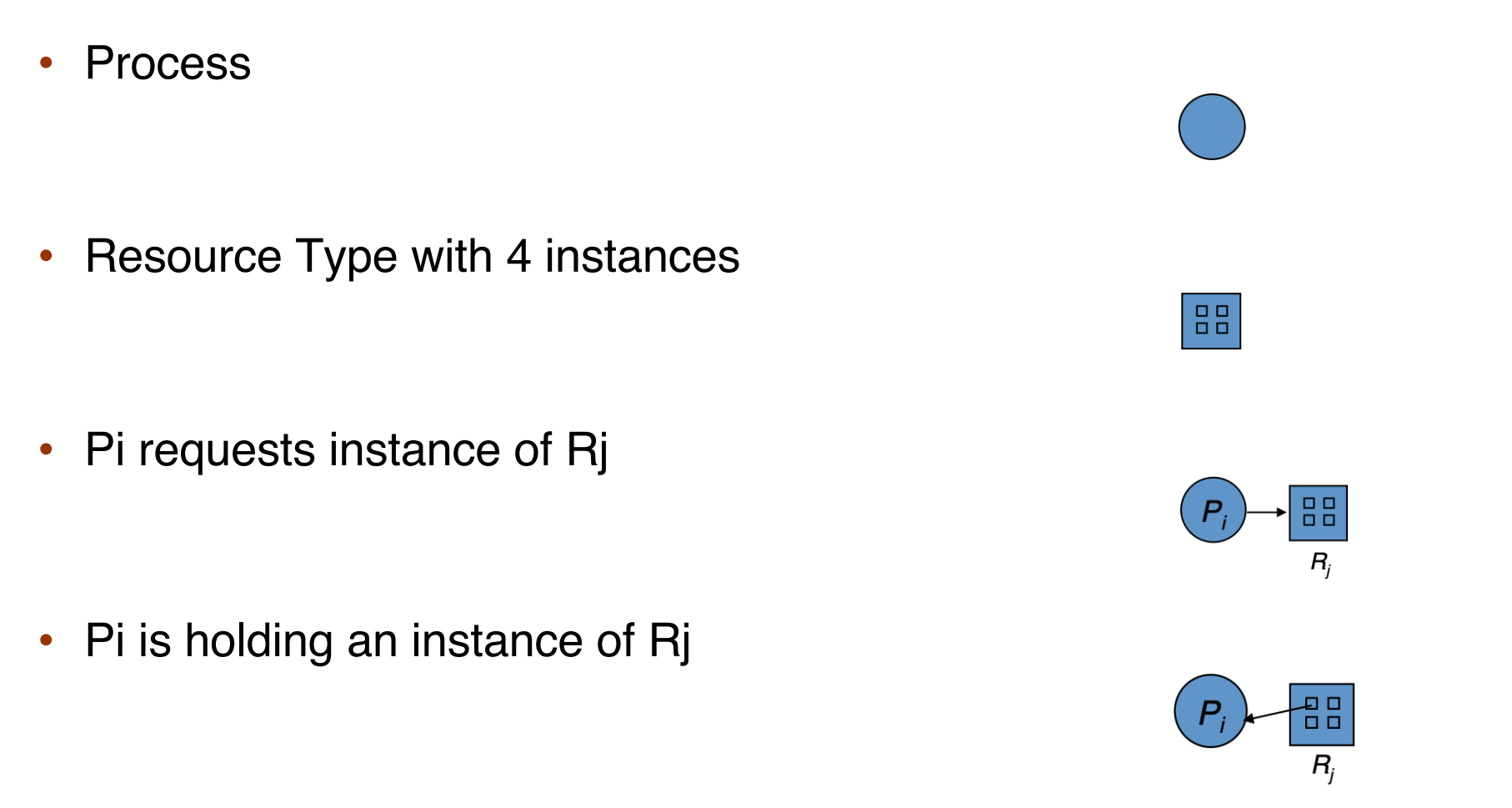
Example

这里没有死锁,P3 先执行,随后释放 R3,再执行 P2,最后 P1。
下面的例子就有死锁:(有环)

这里如果把 R2->P1 抹掉,就没有死锁了(因为 R2 另一个资源可以给 P3
Circular wait does not necessarily lead to deadlock.
有环不一定有死锁,但有死锁一定有环。
Example

Note
- If graph contains no cycles \(\rightarrow\) no deadlock
- If graph contains a cycle
- if only one instance per resource type, \(\rightarrow\) deadlock
- if several instances per resource type \(\rightarrow\) possibility of deadlock
How to Handle Deadlocks¶
- Ensure that the system will never enter a deadlock state
- Prevention
- Avoidance
- Allow the system to enter a deadlock state and then recover - database
- Deadlock detection and recovery
-
Ignore the problem and pretend deadlocks never occur in the system
现在操作系统都是这样做,假装无事发生,因为无法提前预测死锁的发生。
Deadlock Prevention¶
打破死锁的任一一个条件。
-
How to prevent mutual exclusion
sharable 的可以,non-sharable 的没办法。
-
How to prevent hold and wait
-
whenever a process requests a resource, it doesn’t hold any other resources
- require process to request all its resources before it begins execution
-
allow process to request resources only when the process has none
申请资源时不能有其他资源,要一次性申请所有需要的资源。
-
low resource utilization; starvation possible
利用率低,而且可能有进程永远拿不到所有需要的资源,因此无法执行。
-
-
How to prevent no preemption
可以抢,但不实用。
-
How to handle circular wait
-
impose a total ordering of all resource types
给锁一个优先级排序,取锁的时候要求从高往低取锁。
-
require that each process requests resources in an increasing order
- Many operating systems adopt this strategy for some locks.
-
For dynamic acquired lock
有的时候,给锁排序的方法不适用:在银行转账的时候,如果都先锁 from 再锁 to,就会死锁。
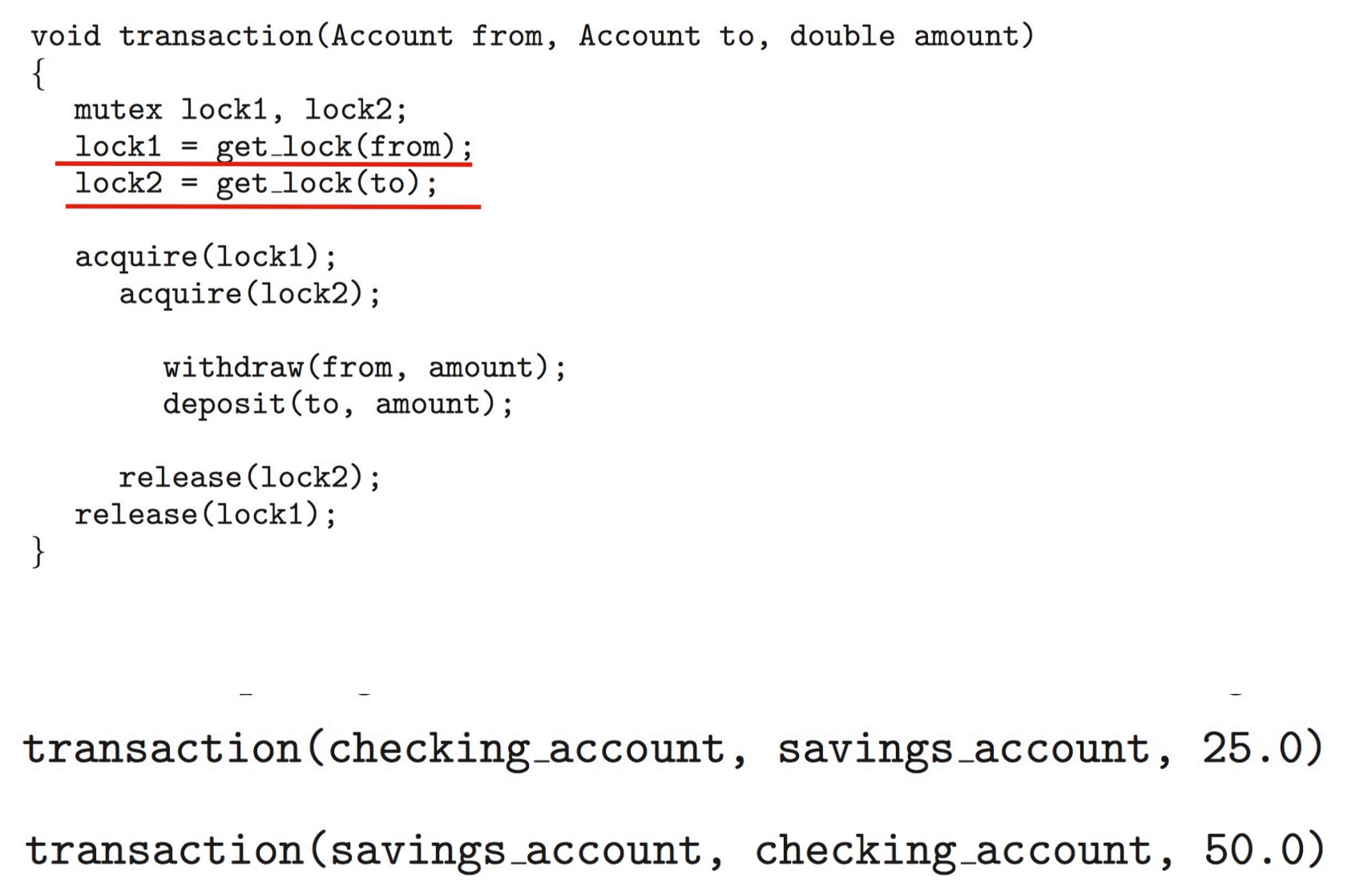
Deadlock Avoidance¶
avoidance 用了一些算法,在分配资源之前,先判断是否会死锁,如果会死锁就不分配。
Safe State
- there exists a sequence \(<P_1, P_2, \ldots, P_m>\) of all processes in the system
-
for each \(P_i\), resources that \(P_i\) can still request can be satisfied by currently available resources + resources held by all the \(P_j\).
序列里的每一个进程都可以被满足
。 (空闲的资源和之前的进程释放的资源)
Safe state can guarantee no deadlock.
- if \(P_i\)’s resource needs are not immediately available:
- wait until all \(P_j\) have finished
- when \(P_j\) has finished, \(P_i\) can obtain needed resources,
- when \(P_i\) terminates, \(P_{i+1}\) can obtain its needed resources, and so on.
Note
- If a system is in safe state \(\rightarrow\) no deadlocks
- If a system is in unsafe state \(\rightarrow\) possibility of deadlock
- Deadlock avoidance \(\rightarrow\) ensure a system never enters an unsafe state
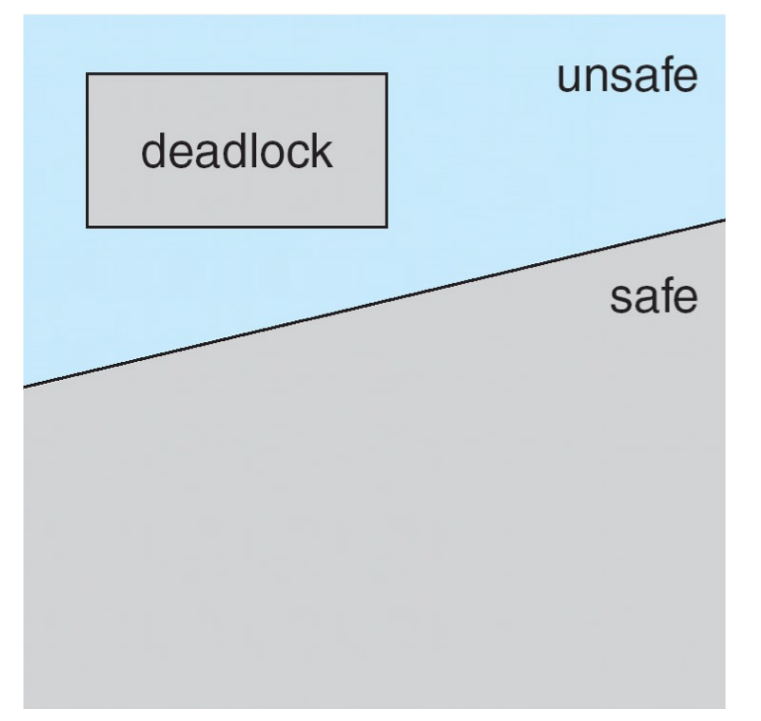
Example

What if we allocate 1 more for P2?
不是一个 safe state,因为做完 P1 后,我们只有 4 个可用,P0 和 P2 都无法满足。
- Single instance of each resource type \(\rightarrow\) use resource-allocation graph
- Multiple instances of a resource type \(\rightarrow\) use the banker’s algorithm
Single-instance Deadlock Avoidance¶
Resource-allocation graph can be used for single instance resourcedeadlock avoidance
-
one new type of edge: claim edge
-
claim edge \(P_i\rightarrow R_j\) indicates that process \(P_i\) may request resource \(R_j\)
想要,但还没有 request。
-
claim edge is represented by a dashed line
- resources must be claimed a priori in the system.
要事先声明。
-
Transitions in between edges
- claim edge converts to request edge when a process requests a resource.
- request edge converts to an assignment edge when the resource is allocated to the process.
- assignment edge reconverts to a claim edge when a resource is released by a process.
Algorithm
- Suppose that process \(P_i\) requests a resource \(R_j\)
- The request can be granted only if:
- converting the request edge to an assignment edge does not result in the formation of a cycle.
- no cycle \(\rightarrow\) safe state
比如这里分配之后就有一个环,no safe state.
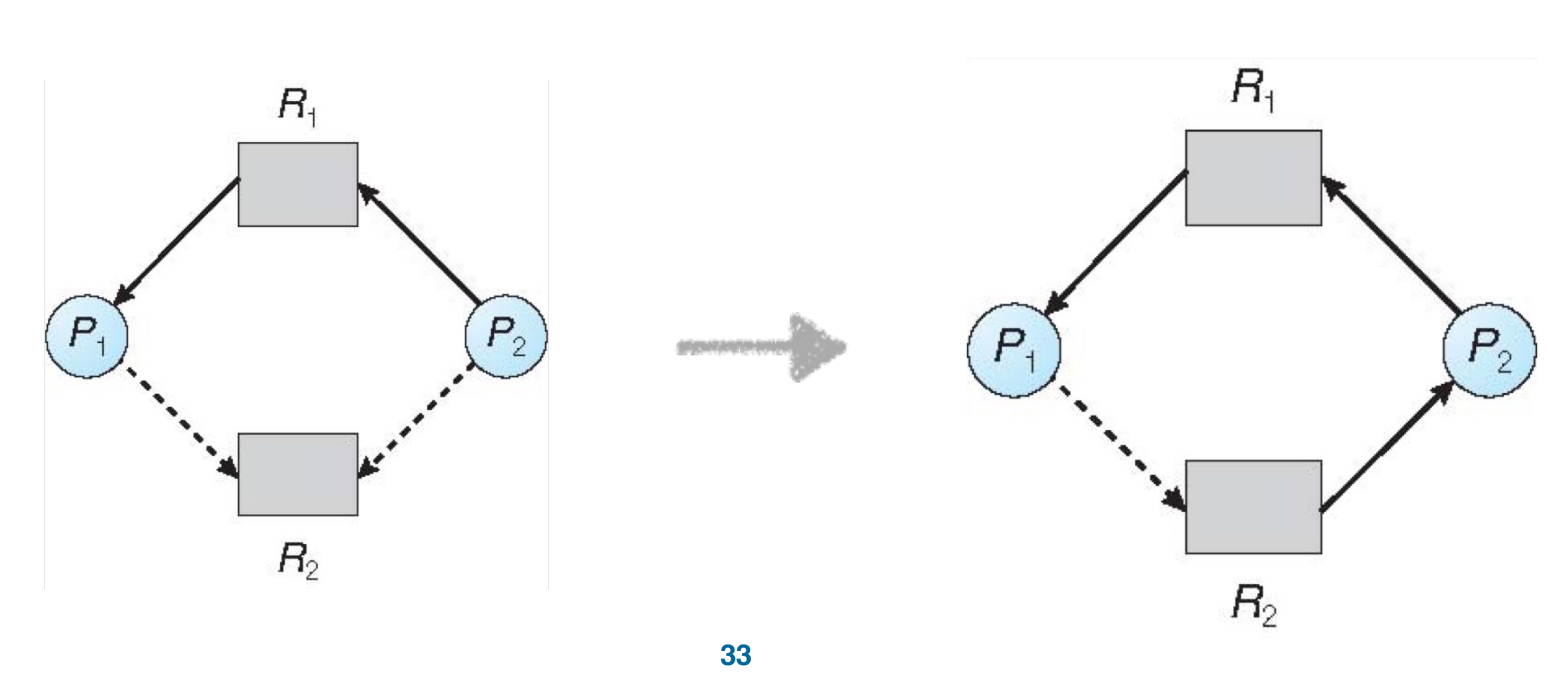
Banker’s Algorithm¶
我们通过 available(当前还没有被分配的空闲资源), max(进程所需要的资源), allocation(已经分配的资源), need(还需要分配多少资源) 这四个矩阵刻画一个时间内各个进程对各种资源的持有和需求情况。
选取一个 need(的每一项都对应地)小于 available(的对应项)的进程,其运行完后会将 allocation 释放回 work(前面的进程执行完毕后,空闲的资源
Example


Deadlock Detection¶
Allow system to enter deadlock state, but detect and recover from it.
Single Instance Resources¶
使用 wait-for graph.
\(P_i \rightarrow P_j\) if \(P_i\) is waiting for \(P_j\)
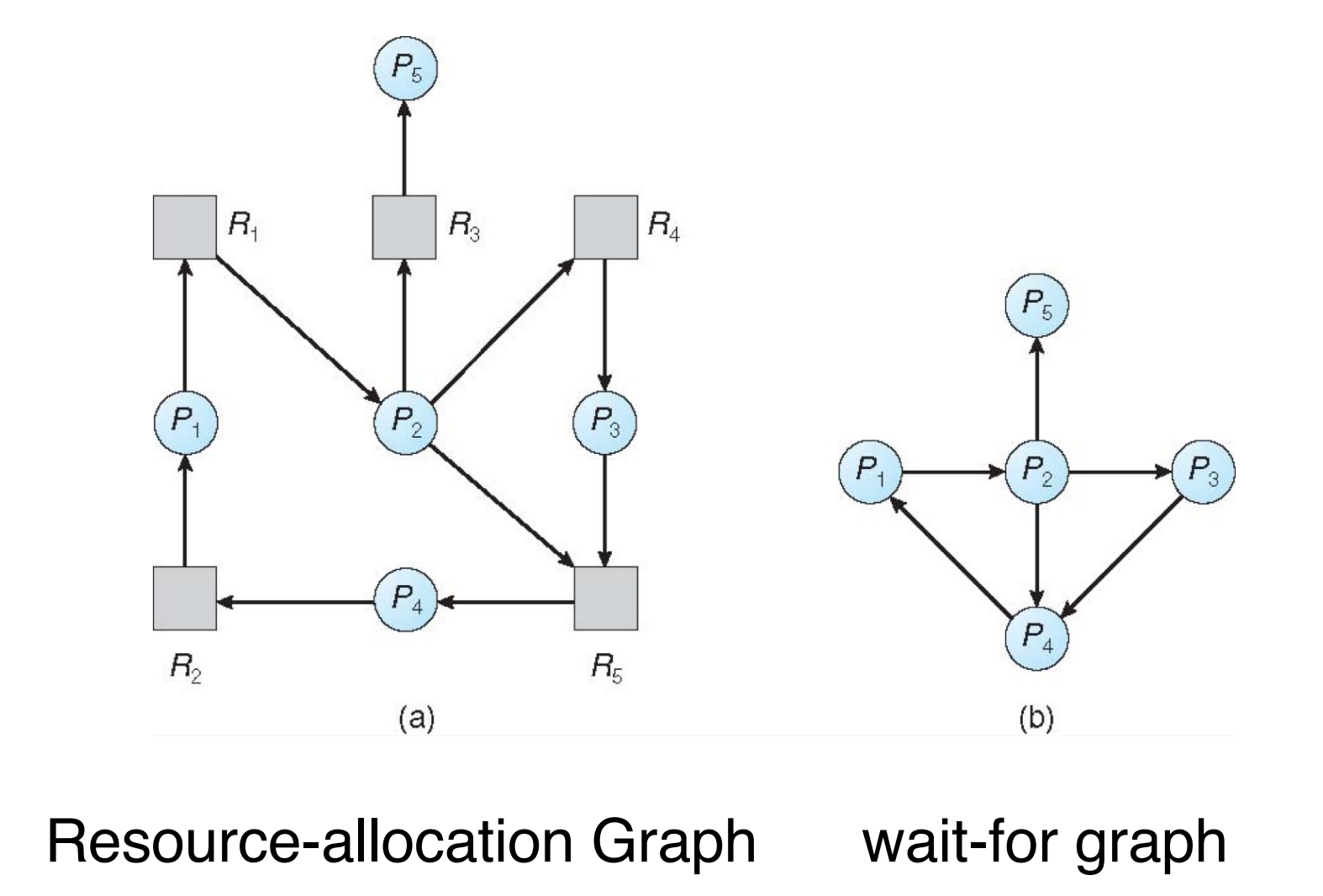
Periodically invoke an algorithm that searches for a cycle in the graph
-
if there is a cycle, there exists a deadlock
有环就有 deadlock。
-
an algorithm to detect a cycle in a graph requires an order of \(n^2\) operations,
- where \(n\) is the number of vertices in the graph.
Multi-Instance Resources¶
类似银行家算法。如果找不到任何安全序列,则说明系统处于死锁状态。
Example
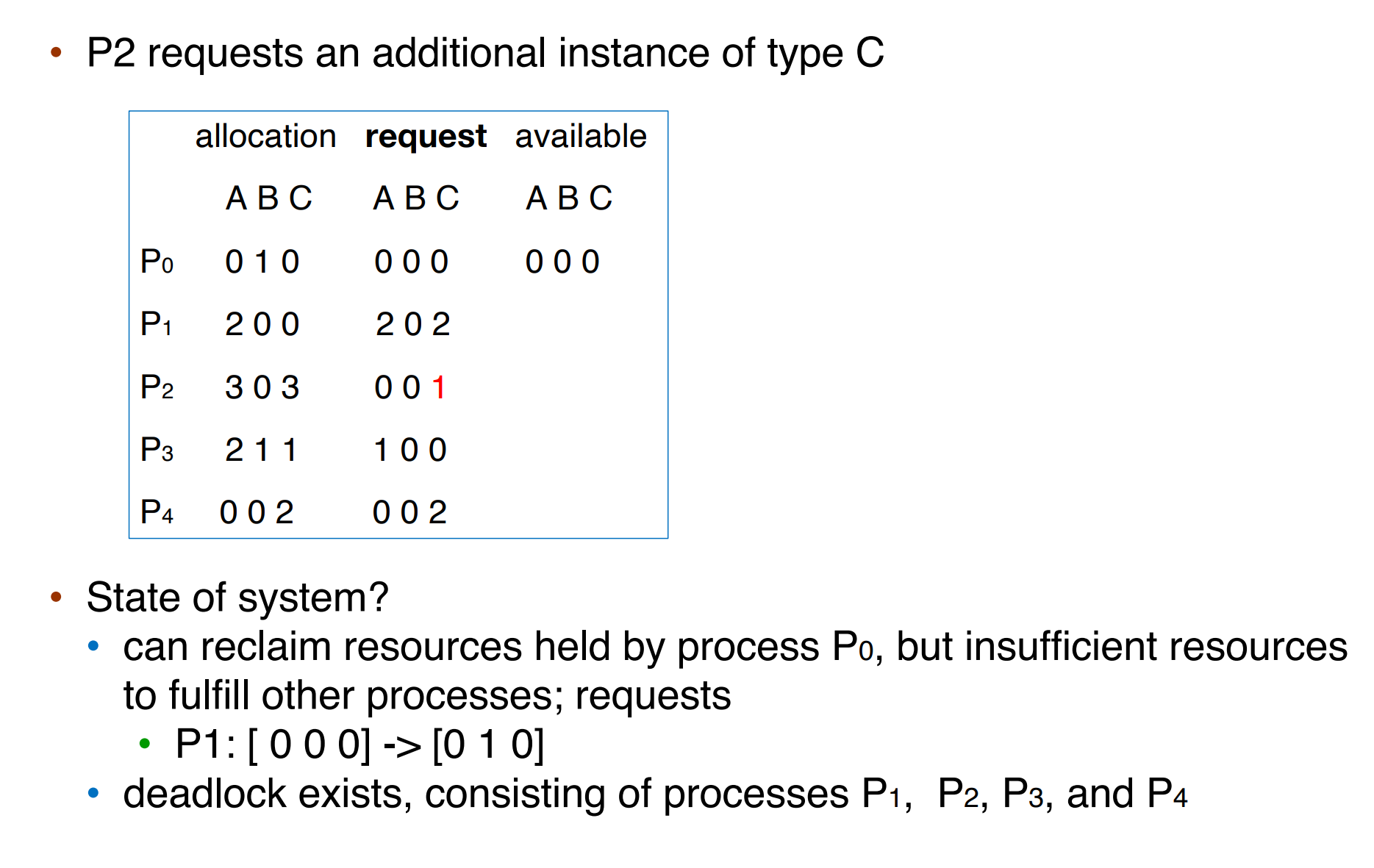
Deadlock Recovery¶
Terminate deadlocked processes.¶
options:
- abort all deadlocked processes.
- abort one process at a time until the deadlock cycle is eliminated.
In which order should we choose to abort?
- priority of the process
- how long process has computed, and how much longer to completion
- resources the process has used
- resources process needs to complete
- how many processes will need to be terminated
- is process interactive or batch?
Resource preemption¶
- Select a victim
- Rollback
- Starvation
- How could you ensure that the resources do not preempt from the same process?
Takeaway¶
Takeaway
- Deadlock occurs in which condition?
- Four conditions for deadlock
- Deadlock can be modeled via resource-allocation graph
- Deadlock can be prevented by breaking one of the four conditions
- Deadlock can be avoided by using the banker’s algorithm
- A deadlock detection algorithm
- Deadlock recover